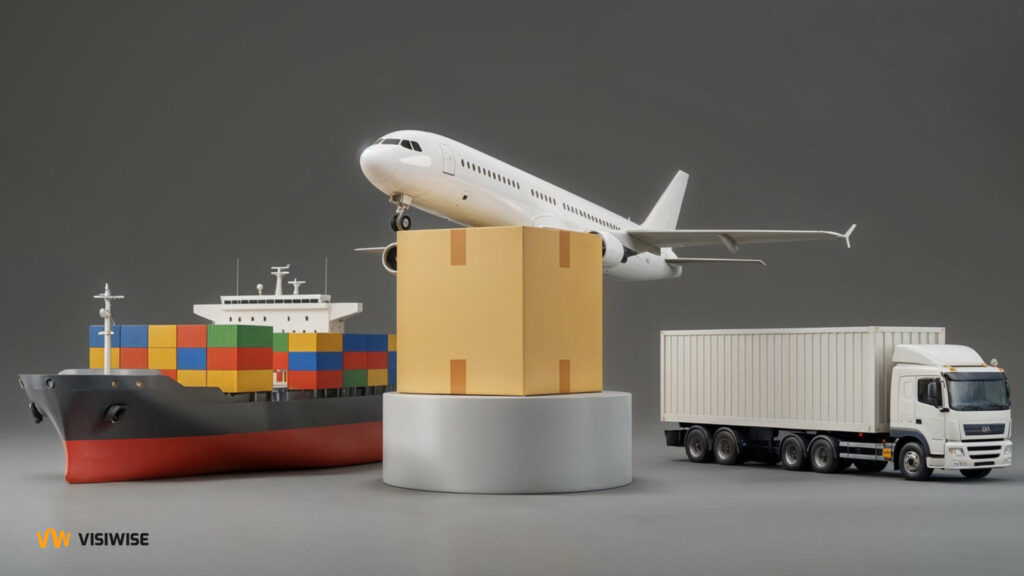Staying connected to your shipments is vital in today’s fast-paced shipping world. For senders and recipients alike, the ability to monitor packages throughout the delivery process brings peace of mind and allows for better planning. The United States Postal Service (USPS) provides an extensive tracking system to ensure you stay informed every step of the way.
In this guide, we’ll break down how USPS tracking operates, exploring its essential features, benefits, and practical tips to make the most of it. Learn how often tracking updates, how to handle stalled updates, and how to use this tool to ease any delivery concerns. By the end, you’ll have the tools to navigate USPS tracking confidently, enabling smoother, more predictable shipping experiences.
Understanding USPS Tracking
USPS Tracking is a service provided by the United States Postal Service that allows customers to monitor the movement of their packages from the moment they are accepted until they reach their destination. Every package receives a unique tracking number, which acts as a digital identifier, enabling updates at each stage of its journey.
What Are the Stages of USPS Tracking?
USPS tracking statuses reflect each step of a package’s journey, from label creation to final delivery. Below are the stages you may see as your package moves through USPS’s network, including various sub-statuses:
1. Pre-Shipment
This status is applied when a shipping label is created but the package has yet to be scanned into the USPS system. Here are common pre-shipment updates:
- Label Created, Not Yet in System: The USPS has registered the label, but it hasn’t been scanned in yet, which can sometimes take up to 24 hours.
2. In Transit
The “In Transit” status applies once USPS has scanned the package and it is moving within its network. Here are some in-transit updates:
- In Transit to Next Facility: The package is en route to another USPS sorting or destination facility.
- Arrival at Unit: The package has arrived at a post office near the delivery address and is scheduled for delivery.
- Departed USPS Facility: The package left the designated USPS facility.
- Arrived at USPS Facility: The package reached the indicated facility.
- Processed at Destination Facility: USPS processed the package at its destination facility.
- Arriving Late: A delay in the package’s delivery.
- Outbound – Out of US Customs: The package was released by U.S. Customs and is headed overseas.
- Customs Clearance: The package cleared U.S. Customs and is back in USPS’s hands.
- Received by USPS from US Customs: The package was returned to USPS by U.S. Customs for final delivery.
3. Out for Delivery
This status indicates the package is on the delivery vehicle and scheduled to be delivered on the designated day.
4. Delivered
This final status confirms that USPS has successfully delivered the package. Two possible sub-statuses include:
- Picked Up: The recipient collected the package from their local post office.
- Delivered to Agent: USPS delivered the package to an authorized agent at the delivery location (e.g., a dormitory or condo building).
5. Delivery Attempt
This status shows that USPS attempted delivery but couldn’t complete it. Sub-statuses for delivery attempts include:
- Held at the Post Office by Customer Request: The recipient requested USPS to hold the package.
- Receptacle Blocked: Access to the delivery area was blocked.
- Receptacle Full/Item Oversized: The mailbox was full, or the package was too large.
- No Secure Location Available: Delivery location was deemed unsafe.
- No Authorized Recipient Available: No one was available to sign for a package requiring a signature.
- No Access to Delivery Location: The USPS worker couldn’t access the delivery area.
6. Accepted
This status means USPS has possession of your package, either at the origin or destination. Sub-statuses include:
- Accepted at Destination: The package arrived at the destination processing facility.
- Origin Acceptance: USPS accepted the package at the originating facility.
- Accepted at USPS Facility: The package was processed at a USPS facility.
- USPS in Possession of Item: USPS picked up the package as scheduled.
7. Available for Pickup
The package is available for the recipient to pick up at a designated USPS location.
8. Alert
Alert statuses indicate an unusual delivery issue, such as address problems or recipient refusal. Examples include:
- Awaiting Delivery Scan: No acceptable delivery scan within 14 hours.
- Refused: The recipient refused the package.
- Unable to Deliver (Address Problem): The address was incorrect.
- Forwarded: USPS forwarded the package to a new address.
- Dead Mail/Sent to Recovery: The package couldn’t be delivered or returned and is sent to the Mail Recovery Center.
9. Return to Sender
USPS may return a package to the sender for various reasons. Sub-statuses include:
- No Such Number: Address information is incomplete or invalid.
- Insufficient Address: Not enough address details were provided.
- Moved, Left No Address: The recipient moved without forwarding information.
- Forward Expired: The forwarding period expired.
- Addressee Unknown: No one by that name resides at the address.
- Vacant: The location is unoccupied.
- Unclaimed/Unspecified: The package is returned due to an unspecified reason (e.g., deceased recipient).
Each status update provides detailed insights into the package’s journey, giving both sender and recipient a clear view of its progress.
How Accurate and Reliable Is USPS Tracking?
USPS tracking is generally reliable, but a few factors can impact its accuracy:
- Scan Frequency: USPS scans packages at each major stage, meaning there may be gaps between scans. If you’re waiting for updates, the next scan may occur only once the package reaches a new location.
- Human Error: Occasionally, a package may miss a scan or get incorrectly labeled, which can cause tracking to appear stagnant or inaccurate.
In most cases, tracking will show an accurate reflection of a package’s location and expected arrival.
How Often Does USPS Update Tracking Information?
Mail items receive tracking updates each time they leave a postal facility. Here’s when you can expect USPS to scan your items:
- When they arrive at the Post Office
- At each postal facility along the route (for long-distance mail)
- Upon arrival at your local Post Office
- When they are out for delivery
- Once they reach the destination
For long-distance mail, you may see more updates due to multiple stops. For local mail, updates may be fewer, possibly appearing only after delivery.
First-Class Mail items, however, are not scanned unless an add-on service is purchased, meaning tracking updates won’t be available without it.
USPS tracking details typically update within 24 hours after scanning. If tracking hasn’t updated beyond this timeframe, other factors discussed in this blog may be responsible.
What to Do If USPS Tracking Isn’t Updating?
If your USPS tracking status hasn’t updated, here are a few steps you can take to investigate and resolve the issue:
- Contact USPS Customer Service The quickest way to inquire about a stalled tracking status is by calling USPS directly at 1-800-275-8777. Be prepared to provide your tracking number and any additional package details. USPS representatives can review your case and provide updates, either on the spot or within 24-48 hours. Alternatively, you can call 1-800-344-7779 for technical support or 1-800-222-1811 specifically for delivery tracking assistance.
- Allow a Few Days for Updates Tracking delays are often due to minor issues like missed scans. It’s common for the tracking information to update within a few hours or days. USPS suggests waiting up to five business days before taking further action, as many items in transit will eventually be scanned and updated.
- Visit Your Local Post Office For a more personalized approach, you can visit your nearest post office with your mailing receipt. Staff can assist with your package details if they have access to your tracking number, which you can find on your receipt or confirmation email. This option might provide faster answers if your local post office is conveniently located.
- Verify the Tracking Number Double-check that you’ve entered the correct tracking number on the USPS website. Tracking numbers for USPS shipments are typically 20-22 digits long, while Express Mail tracking numbers contain 13 characters, beginning with two letters and ending with “US.” Make sure you are using the number as shown on your confirmation email, receipt, or delivery slip.
- Look Out for Delivery Notices If the carrier attempted delivery but couldn’t leave your item, you may find an orange notice slip with a tracking number on your doorstep. Use this tracking number on the USPS website to see the latest information on your package.
Can USPS Deliver Packages Without Tracking Updates?
In rare cases, packages can be delivered without showing the typical tracking updates. This can happen when:
- A package bypasses a scanning location.
- Rural or remote areas are involved, with fewer scanning facilities.
- USPS Informed Delivery provides delivery information but lacks tracking updates.
How to Track International Shipments with USPS
When shipping internationally, delays, customs holds, and potential misdeliveries can disrupt operations and impact customer satisfaction. USPS International Tracking provides a reliable way to monitor shipments, offering peace of mind with real-time updates throughout the package’s journey. Here’s how to use USPS tracking to enhance your client experience, proactively manage potential issues, and streamline your logistics.
Guide to Tracking International Shipments:
- Locate Your Tracking Number
Your unique tracking number, typically 22 characters long, is essential for tracking your parcel. You’ll find it on your shipping receipt, sales receipt if you bought insurance, or in the confirmation email from USPS if you shipped online. - Visit the USPS Tracking Website
Head to USPS Tracking (https://tools.usps.com/), enter your tracking number, and click “Track a Package” to view the latest information on your shipment. - Review Tracking Details
On the tracking page, you’ll see the package’s current status and detailed tracking history. From acceptance scans and customs checkpoints to attempted deliveries, this data provides a transparent look at each step of your shipment’s journey. Use the estimated delivery date to manage customer expectations and minimize inquiries. - Take Advantage of Additional Tracking Features
o Email/SMS Alerts: Sign up for notifications on shipment updates, delays, or delivery attempts.
o USPS Mobile App: Download the app to track on the go and access additional features like barcode scanning and package scheduling.
o Customer Service: For assistance, contact USPS Customer Service, where representatives can address your questions or concerns.
Proactive Tips for Optimal Tracking:
- Verify Tracking Numbers: Double-check tracking numbers for accuracy to prevent tracking delays or confusion.
- Share Tracking Updates with Customers: Keep customers in the loop by providing real-time tracking information, building transparency and trust.
- Analyze Historical Tracking Data: Use previous tracking data to identify potential delays and optimize your shipping strategy.
- Utilize Tracking Alerts for Issue Management: Address any delays or issues promptly with tracking alerts, helping to ensure on-time deliveries and smoother operations.
Using these USPS tracking tools and proactive strategies, you can optimize your international shipping experience and maintain high levels of customer satisfaction.
How to Use USPS Informed Delivery to Track Mail
USPS Informed Delivery is a free service that gives you a daily email with images of incoming mail and package updates. Here’s how it works:
- Sign Up on USPS Website: Register for Informed Delivery to receive alerts for mail and packages.
- Package Tracking: Alongside incoming mail images, you’ll see packages that are due to arrive, often with estimated delivery dates.
- Real-Time Updates: Informed Delivery keeps you notified of updates, which can be especially useful if you are waiting for a critical package.
USPS Tracking: Essential Data and Trends
USPS tracking plays a vital role in today’s shipping industry, providing essential data for both individual customers and businesses. Here are some notable statistics and insights:
- Widespread Usage: Over 95% of packages sent through USPS include tracking information, underscoring its importance for shipment visibility and accountability.
- High Volume Handling: USPS processes billions of packages annually, with millions of customers depending on tracking to stay informed about delivery progress.
- Business Benefits: USPS tracking data enables businesses to optimize operations, manage inventory more effectively, and enhance customer satisfaction through real-time updates.
These statistics highlight the critical role of USPS tracking in modern logistics, shaping a more efficient and customer-focused shipping experience.
Final Thoughts
USPS tracking is a valuable tool for staying informed about the status of your packages. While the accuracy and update frequency generally meet expectations, some gaps may occur. Using USPS Informed Delivery and knowing what to do if tracking stalls can keep you prepared and reduce delivery anxiety.


